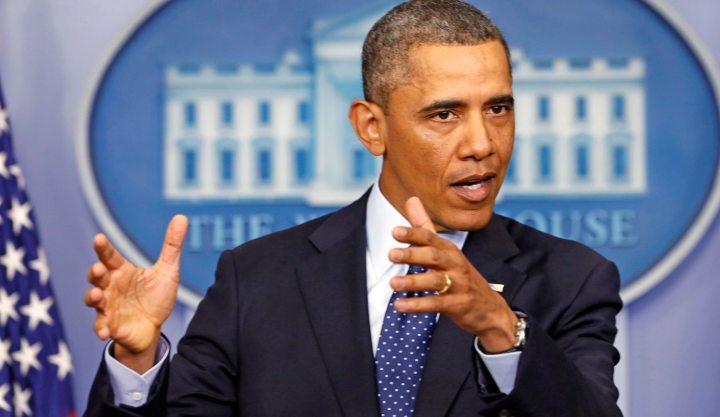Newsdeck
As Washington Frets, Markets Take US Spending Cuts In Stride

Broad spending cuts designed to hit most U.S. government programs with all the subtlety of a sledgehammer were set to begin taking effect on Friday, yet investors barely batted an eyelash. By Steven C. Johnson and Jason Lange.
The $85 billion in across-the-board “sequestration” cuts were expected to eventually cause airport delays, disrupt public services and result in lower pay or layoffs for millions of government workers.
What they were not likely to do, at least as far as financial markets were concerned, was cause enough damage to derail a U.S. economy that has lately been gaining momentum.
Some also saw the chance of weaker growth and higher unemployment from the spending cuts making it likelier the Federal Reserve will keep monetary policy ultra-loose longer.
And the so-called sequester might not even stick around long enough to have much of an impact, some analysts said.
“The stock market isn’t worried. It’s at five-year highs, and the sequester gives the Fed all the more reason to keep its foot on the gas,” said Marc Chandler, global head of currency strategy at Brown Brothers Harriman.
President Barack Obama and congressional leaders met in the White House on Friday but did not reach a budget deal. Investors have had a long time to weigh how the sequester could affect growth and most believe it will not trigger a recession.
“Most of us believe that sequestration is not something that will make us fall off the cliff, since the cuts will be worked in relatively slowly,” said Bill Stone, chief investment strategist at PNC Wealth Management in Philadelphia, which has $115 billion in assets.
Despite uncertainty around the cuts, “even if the estimates are right and GDP drops by half a percent, that’s not a fatal blow,” he said.
European stocks slid on worries about a slowdown in the Chinese economy, but encouraging figures on the U.S. manufacturing sector boosted equities on Wall Street.
The MSCI world stocks index fell 0.23 percent on Friday. The U.S. dollar rose 0.4 percent against a basket of currencies to a six-month high.
However, the specter of spending cuts in the United States, the world’s biggest oil consumer, worried oil markets. U.S. crude oil futures fell by $1.37 on Friday to settle at $90.68 a barrel, the lowest closing price since early December.
U.S. stocks rose, ending the week higher, as data showed U.S. manufacturing growth rose to its fastest pace in 20 months in February.
The benchmark Dow Jones industrial average is less than 1.0 percent below a record high, up more than 7.0 percent this year. The more widely followed Standard & Poor’s 500 is less than 4.0 percent from entering record territory.
Even an index of stocks in a sector seen at the cross-hairs of the spending cuts, the Philadelphia Stock Exchange Defense Index, hit an all-time intraday high on Thursday and traded near flat on Friday. The sequester will hit the U.S. military particularly hard, with defense programs set to be cut about 13 percent. Yet the index has gained nearly 7.0 percent this year.
Investors said continued support from the Fed, after Chairman Ben Bernanke mounted a strong defense of the central bank’s stimulus policy this week, would blunt the cuts’ effects.
What’s more, markets have been down this road before. In late 2012, investors and CEOs fretted that the sequester, initially to take effect in January along with $500 billion of tax increases, would cause a new recession.
A deal struck by Republicans and Democrats on New Year’s Day averted most of the tax hikes but postponed the spending cuts until March 1. Major U.S. stock indexes rallied anyway, with the S&P 500 up 6.0 percent and the Dow up 7.0 percent this year.
BELT-TIGHTENING
Economists are not as relaxed. Many say government belt tightening will put a brake on growth this year, whether or not the sequester happens.
The Congressional Budget Office, whose calculations are the foundation of many Wall Street forecasts, says fiscal tightening will knock about 1.5 percentage points from growth this year.
The spending cuts from the sequester make up a third of that, or 0.6 percentage points. A tax hike enacted in January will also drag on the economy, as will other spending cuts.
The labor market would also suffer, ending 2013 with 750,000 fewer jobs than without the sequester, the CBO estimates.
These worries have pushed some investors into the relative safety of U.S. government bonds, with the benchmark 10-year yield slipping to 1.84 percent this week after hitting 2.06 percent, its high for the year, on Feb. 14.
Bernanke, speaking to lawmakers on Wednesday, urged Congress to try to push spending cuts further into the future to shield a fragile economy.
“If you slow the economy that hurts your revenues. And that means your deficit reduction is not as big as you think it is,” he said.
Many investors, though, say the cuts, while annoying and painful, are too small a percentage of federal spending to do serious damage to the economy or have much impact on the deficit, which has exceeded $1 trillion for four years.
STILL TIME ON THE CLOCK
The question appears to be the duration of the budget cuts.
Standard & Poor’s expects the sequester to be replaced in the second quarter by a long-term package of spending cuts and revenue increases.
“If this proves true, we think the sequester would still have only a mild downside effect on GDP growth this year,” the rating agency said in a statement.
If the cuts last only a few weeks, the impact on growth and jobs could be marginal because some budget cuts will not translate into immediate spending cuts.
The Defense Department, for example, will probably not begin furloughing some 800,000 civilian workers until late April, after which these workers will work one day less per week. Budget cuts for capital spending could also be delayed.
The CBO estimates that only about half of the $85 billion in budget cuts planned from March through September would translate into lower spending during that period.
Once the furloughs and other spending cuts take hold, though, workers will feel the pinch, especially the 2.8 million people employed by the federal government.
“Their income is going to shrink considerably,” said Omair Sharif, an economist at RBS in Stamford, Connecticut.
Tim Ghriskey, chief investment officer at Solaris Asset Management, said he thinks markets are betting all this will force Republicans and Democrats to the bargaining table.
“The grace period is probably a month or two,” Ghriskey said. “But if it becomes clear that these arbitrary cuts are starting to do damage and there’s no sign of compromise, that’s when the market could start to react.” DM
Photo: U.S. President Barack Obama speaks about the sequester after a meeting with congressional leaders at the White House in Washington March 1, 2013. Obama pressed the U.S. Congress on Friday to avoid a government shutdown when federal spending authority runs out on March 27, saying it is the “right thing to do.” REUTERS/Kevin Lamarque



















 Become an Insider
Become an Insider